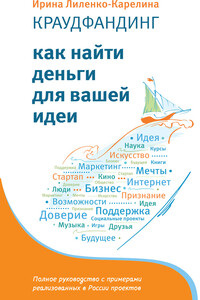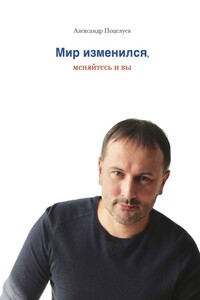Agile: оценка и планирование проектов - [114]
— А еще не забывайте, что Deep Black & White вышла позже на полгода, а не на две недели.
— Так что, Фрэнк, ты опять будешь угощать нас бургерами в честь этого релиза?
— Нет, на этот раз я куплю вам все, что вы пожелаете.
Список литературы
Abdel-Hamid, Tarek K. 1993. Adapting, Correcting, and Perfecting Software Estimates: A Maintenance Metaphor. IEEE Computer 26 (3): 20–29.
Ambler, Scott W. 2004. Less Is More. Software Development, November.
Anderson, David. 2004. Agile Management for Software Engineering: Applying the Theory of Constraints for Business Results. Prentice Hall.
Andrea, Jennitta. 2003. An Agile Request For Proposal (RFP) Process. Agile Development Conference.
Armour, Phillip. 2002. Ten Unmyths of Project Estimation. Communications of the ACM 45, no. 11: 15–18.
Baker, Simon. 2004. Email to [email protected] on November 3, 2004.
Ballard, Glenn, and Gregory A. Howell. 2003. An Update on Last Planner. Proceedings of the 11th Annual Conference of the International Group for Lean Construction, pp. 1–13.
Beck, Kent. 2002. Test Driven Development: By Example. Addison-Wesley.
Beck, Kent, and Martin Fowler. 2000. Planning Extreme Programming. Addison-Wesley.
Beck, Kent, et al. 2001. Manifesto for Agile Software Development, www.agilemanifesto.org.
Bentley, Jon. 1999. The Back of the Envelope. IEEE Software 16 (5): 121–125.
Bills, Mark. 2004a. ROI: Bad Practice, Poor Results. Cutter IT Journal 17 (8): 10–15.
Bills, Mark. 2004b. Useful Back-of-the-Envelope Calculations. Cutter IT E-Mail Advisor, October 27.
Boehm, Barry. 1981. Software Engineering Economics. Prentice Hall.
Boehm, Barry. 2002. Get Ready for Agile Methods, with Care. IEEE Computer, 35 (1): 64–69.
Boehm, Barry, and Richard E. Fairley. 2000. Software Estimation Perspectives. IEEE Software 17 (6): 22–26.
Bossi, Piergiuliano. 2003. Using Actual Time: Learning How to Estimate. In Extreme Programming and Agile Processes in Software Engineering: 4>thInternational Conference, edited by Michele Marchesi and Giancarlo Succi.
Bossi, Piergiuliano, and Francesco Cirillo. 2001. Repo Margining System: Applying XP in the Financial Industry. Proceedings of the 2nd International Conference on Extreme Programming and Flexible Processes in Software Engineering (XP2001).
Brenner, Lyle A., Derek J. Koehler, and Amos Tversky. 1996. On the Evaluation of One-sided Evidence. Journal of Behavioral Decision Making 9: 59–70.
Brooks, Fred. 1975. The Mythical Man Month: Essays on Software Engineering. Addison-Wesley.
Center for Quality of Management. Special Issue on Kano’s Methods for Understanding Customer-defined Quality. Center for Quality of Management Journal 2 (4).
Cirillo, Francesco. 2005. Tracking the Project with the Pomodoro. Unpublished article.
Clark, Kim B., and Steven C. Wheelwright. 1993. Managing New Product and Process Development: Text and Cases. The Free Press.
Cockburn, Alistair. 2002. Agile Software Development Joins the «Would-Be» Crowd. Cutter IT Journal 15 (1).
Cohn, Mike. 2004. User Stories Applied: For Agile Software Development. Addison-Wesley.
Constantine, Larry L., and Lucy A. D. Lockwood. 1999. Software for Use: A Practical Guide to the Models and Methods of Usage-Centered Design. Addison-Wesley.
DeGrace, Peter, and Leslie Stahl. 1990. Wicked Problems, Righteous Solutions: A Catalog of Modern Engineering Paradigms. Prentice Hall.
DeLuca, Jeff. 2002. FDD Implementations. www.nebulon.com/articles/fdd/fddimplementations.html.
DeMarco, Tom, and Timothy Lister. 2003. Waltzing with Bears: Managing Risk on Software Projects. Artech House.
Duggan, Jim, Jason Byrne, and Gerald J. Lyons. 2004. A Task Allocation Optimizer for Software Construction. IEEE Software 21 (3): 76–82.
Ganssle, Jack. 2004. The Middle Way. Embedded Systems Programming, October 14.
van Genuchten, Michiel. 1991. Why Is Software Late? An Empirical Study of Reasons for Delay in Software Development. IEEE Transactions on Software Engineering 17 (6): 582–590.
Gilb, Tom. 1988. Principles of Software Engineering Management. Addison-Wesley.
Githens, Greg. 1998. Rolling Wave Project Planning. Proceedings of the 29>thAnnual Project Management Institute 1998 Seminars and Symposium.
Goldratt, Eliyahu M. 1990. What Is This Thing Called Theory of Constraints and How Should It Be Implemented? North River Press.
Goldratt, Eliyahu M. 1992. The Goal: A Process of Ongoing Improvement, 2nd rev. ed. NorthRiver Press.
Goldratt, Eliyahu M. 1997. Critical Chain. North River Press.
Goldratt, Eliyahu M. 2000. Necessary But Not Sufficient. North River Press.
Grenning, James. 2002. Planning Poker, www.objectmentor.com/resources/articles/PlanningPoker.zip.
Griffin, Abbie, and John R. Hauser. 1993. The Voice of the Customer. Marketing Science 12 (1): 1–27.
Hagafors, R., and B. Brehmer. 1983. Does Having to Justify One’s Decisions Change the Nature of the Decision Process? Organizational Behavior and Human Performance 31: 223–232.
Highsmith, Jim. 2004a. Agile Project Management: Creating Innovative Products. Addison Wesley.
Highsmith, Jim. 2004b. Email to [email protected] on February 16, 2004.

Резюме – это игра чисел и слов, и единственный способ выиграть – не позволить другому кандидату получить приглашение на собеседование только потому, что его резюме лучше. Как одержать победу в этой игре и не оказаться в списке аутсайдеров на первом этапе отбора вы узнаете, прочитав эту книгу.Вы сможете преобразовать традиционное резюме в продающее, которое будет передавать знания, умения и навыки на языке, понятном работодателю.

Рассматриваются такие инструменты статистического анализа взаимосвязи, как корреляционный и регрессионный анализ. Техника работы в пакете Excel изучается на примере смоделированных данных. Затем полученные навыки применяются к анализу реальных данных по ценам в интернет-магазине и биржевым котировкам на Московской бирже.

Немного общих слов об ERP (планирование ресурсов предприятия), прикладных информационных технологиях в бизнесе, повышающих руководство потоками.

У вас есть идея? План, как сделать мир лучше? Блестящий проект, который обязательно должен состояться? Значит, вам нужны деньги. Можно продать что-нибудь ненужное – или нужное, – или взять кредит, или попросить денег у тех, кто будет рад жить в мире, где ваши мечты воплотились в реальный продукт. «Краудфандинг. Как найти деньги для вашей идеи» поможет вам преподнести проект так, чтобы в него поверили – помимо вас – все, кто о нем узнает. Неважно, есть ли у вас уже опыт сбора средств или вы только задумываетесь об этом – эта книга поможет вам самостоятельно осуществить краудфандинговый проект и претворить свою мечту в реальность.

Это первое руководство по комьюнити-менеджменту от российского практика. Внедрив инструменты выращивания лояльных сообществ, вы сможете: — создать точки концентрации лояльной аудитории, работая в соцсетях, мессенджерах и офлайн; — повысить вовлеченность; — защититься от троллинга; — превратить сообщество в воронку для новой аудитории; — воодушевить участников на ожидаемые действия. Книга содержит примеры организаций из разных сегментов и послужит азбукой для новичков и шпаргалкой для практиков.

Изучать маркетинговые инструменты на личном опыте — занятие дорогостоящее и рискованное. Не одна компания утонула, копируя действия конкурентов и используя потрёпанные годами шаблоны. Почему же старые методы ведения бизнеса уже не работают? Что такое маркетинг и существует ли он вообще? Как создать продукт, который будет пользоваться спросом у клиентов и приносить владельцу бизнеса деньги, радость и удовлетворение?